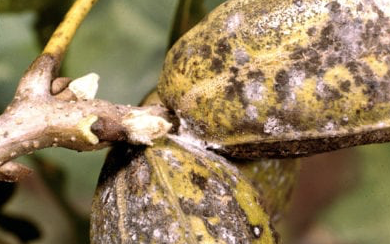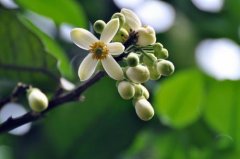What effect does the symptom of hickory pink mildew have? How to control pink mildew of hickory
Pink mildew on pecans is a secondary disease that usually develops from a fungal disease called pecan scab when nuts have previously been injured. The key to dealing with pecan powder mold is to solve the preliminary problem; if the pecan scab fungus is properly controlled, the use of pecan with pink mold can usually be avoided.
Symptoms of pecan pink mildew: initially, pink mold enters through cracks and cracks in pecans, exposing damaged tissue in the green hull. If the conditions are wet, the pink mold grows quickly and enters the inside of the pecan, destroying the nut and leaving a large amount of pink powder in its place. There is usually a rotten smell.
The management of pecan sore disease usually solves any problem of pink mold on pecans. Pecan sore is a common but very destructive disease that affects leaves, nuts and branches, especially in wet, humid environments. You may not be able to completely eliminate the disease, but you can reduce the presence of pathogens, thereby minimizing the risk of pecan powder mold.
If you are planting new hickory trees, always start with disease-resistant varieties. Your local cooperative promotion office can provide advice on the best varieties in your area. The plant hickory trees get the best ventilation there. Leave enough space between the trees. Similarly, thin and prune trees to maintain a healthy airflow. Keep the area clean. Remove debris from the ground around the tree because leaves, branches, nuts and other plant substances may contain pathogens. Dumping debris into the soil may help prevent infection. Implement the fungicide spray plan. Your local cooperative promotion office or knowledgeable greenhouse or nursery can help you determine the best product for your specific situation. Once the tree emerges from dormancy in early spring, the first spray treatment should be in the pre-pollination stage. Fungicides were re-applied two and four weeks later. At this point, spray once every three weeks for the rest of the growing season.
Read the label carefully and use appropriate tools to spray fungicides. Spray the trees thoroughly to form a film on the surface of all the leaves.

- Prev

Introduction of new eggplant varieties Barbarella, Barbarella eggplant planting technology care
Like other garden fruits and vegetables, hundreds of different varieties of eggplant are grown in the garden. If you like to try new eggplant varieties, you might be interested in growing Barbarella eggplant. What is Barbarella eggplant? Continue reading about eggplant Barbarella
- Next

What is the use of grapefruit flowers? Pomelo flowers can be made into sparkling drinks in addition to tea.
In addition to making grapefruit flowers into "pomelo scented tea", the agricultural value-added proofing center of Hualien Agricultural improvement Farm has recently successfully developed and extracted organic grapefruit flower essence from Ruisui Township and added it to wheat juice to make "pomelo white jade sparkling drink". Only in Hualien Field on the 20th.
Related
- A course of planting techniques and methods on how to grow carrots
- How to plant the latest tulips?
- Is it better to pick tea in the morning or in the afternoon? When is the best time for tea to be picked? what is the third or fifth tea?
- Launch Yuanxiao Happy combination Haocha + Tea Yuan healthy Taste
- Penghu Tourism "Fireworks 20 Parade with You"
- 2022 West Lake Happiness holds "Digital Revitalization Voucher" and draws iphone13 and laptop.
- Banqiao Fuzhou social houses are designed to change start-up combined with police elimination to create a safe and livable environment
- The convenient measure of "mechanical weeding" in Xinbei has been abused and the Agriculture Bureau has imposed heavy penalties on the illegal land consolidation.
- Changgeng University Joins Hands with Four Memory Factories to Rescue Memory Talent Shortage
- The list of Taiwan's top 100 MVP managers is listed by the Director-General of the Farmers' Association of Sanxia District.

